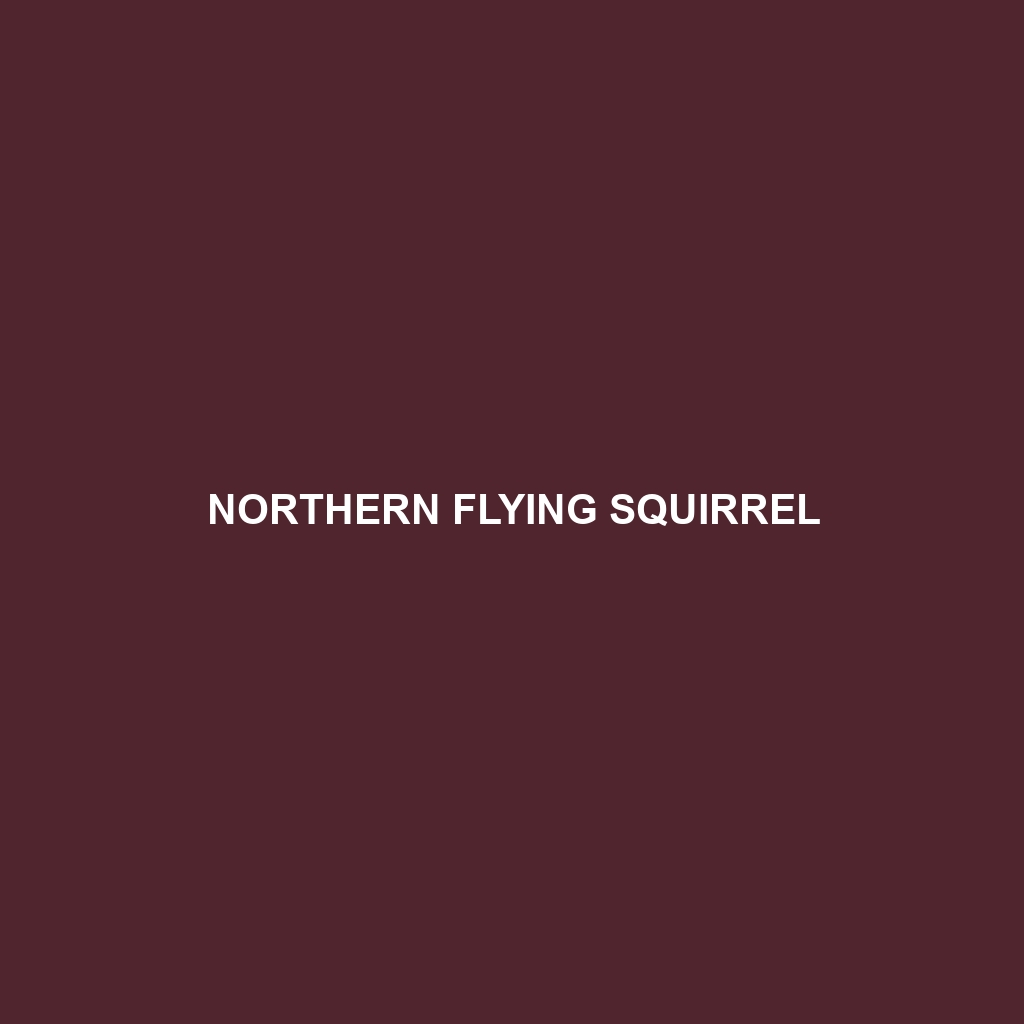Northern Flying Squirrel
Common Name: Northern Flying Squirrel
Scientific Name: Glaucomys sabrinus
Habitat: The Northern Flying Squirrel is primarily found in the mature forests of North America, particularly in the northern regions of the United States and Canada. These squirrels thrive in environments that contain both deciduous and coniferous trees, with a preference for areas rich in old-growth forests. They are commonly spotted in the Pacific Northwest, the Appalachian Mountains, and parts of the Northeast, where they can glide between trees with ease.
Physical Characteristics: Northern Flying Squirrels are medium-sized rodents, typically measuring between 9 to 12 inches in length, including their bushy tails. Their fur is soft and varies in color from grayish-brown to dark brown, with lighter underparts. A distinctive feature is their patagium, a membrane that extends from their wrists to their ankles, allowing them to glide through the air. Their large, dark eyes give them excellent night vision, essential for their nocturnal lifestyle.
Behavior: These squirrels are primarily nocturnal, which means they are active during the night. They are known for their gliding abilities, using their patagium to soar between trees in search of food or to evade predators. Northern Flying Squirrels are social animals that can often be found in small family groups. They communicate through a range of vocalizations and display playful behaviors, especially during the mating season.
Diet: The diet of the Northern Flying Squirrel is diverse, consisting mainly of nuts, seeds, fruits, and fungi. They have a particular fondness for the nuts of beech, maple, and oak trees. Their feeding habits are crucial to their role as seed dispersers, helping maintain the health of their forest habitats. Additionally, they will sometimes consume insects and small invertebrates.
Reproduction: Northern Flying Squirrels typically breed once or twice a year, with the main breeding season occurring in late winter to early spring. After a gestation period of about 40 to 45 days, the female gives birth to a litter of 2 to 5 young. The mothers are highly attentive, caring for their young until they are capable of independence at about 2 to 3 months of age. Notably, they may have multiple breeding cycles in a year depending on environmental conditions.
Conservation Status: The current conservation status of the Northern Flying Squirrel is classified as *Near Threatened*. Loss of habitat due to logging, urban development, and climate change poses significant threats to their populations. Conservation efforts are important to ensure their survival and habitat preservation.
Interesting Facts: Northern Flying Squirrels can glide up to 150 feet, making them remarkable fliers. Their unique adaptation to the forest canopy allows them to avoid numerous ground-based predators. Additionally, these squirrels play a pivotal role in their ecosystems by aiding in the dispersion of fungi spores through their diet, which further supports the forest’s biodiversity.
Role in Ecosystem: The Northern Flying Squirrel is an essential member of its ecosystem, contributing to seed dispersal and maintaining the health of forest regions. Their dietary habits help facilitate plant growth, while their interactions with fungi promote the development of mycorrhizal networks that benefit many tree species. By serving as prey for larger predators, they also play a critical role in the food web, highlighting their significance within their habitat.
